Avebury Part 3/6 - The Stone Circle, many details.
In this section we go into more detail about the Avebury Stone Circle.
The Avebury Stone Circle.
Around the stone circle lies a nearly 10 m deep ditch and beyond it a nearly 10 m high earthen shore. Excavations have shown that 15 m was a reality for both of them so that one can speak about 30 m of height difference. What that wall was meant for is not really clear, but since it is on the outside, defense seems unlikely. Shore and ditch were most likely first laid out and the rest followed in phases. Bones were used to loosen the ground and so used the shoulder blade of a deer as a shovel. Shore and ditch are interrupted in four places (the four corners of the wind) and thus mark entrances and exits. Later on, there will be two access stones each. Everywhere excavation has shown that this was the original design. It should be noted that due to the presence of the lime in the subsoil, both the ditch and the shore came across snow white, a striking caress for the eye. The village of Avebury is in the middle of it and modern roads are currently running through it. The church and the abbey building/museum are located just outside the Henge.
The henge that has been obtained is not entirely perfect. Most likely this was done deliberately because one could certainly easily make a perfect circle with a wooden pole and a rope. The diameter is kept at 400 m.
For the circle, massive, unprocessed stones were used. One sees that the stones with their smooth side, so to speak the most eroded side, are placed inwards. It is the largest of its kind and the second largest in the world.
As already mentioned, the circle itself consisted of about 100 stones and there are less than 30 of them left, 28 to be exact. These are by far the largest stones. The other stones on the site range in size from 2.1 to 5.5 meters. They range in weight from 10 to 60 tons.
In the northern and southern half of this circle there were two smaller (diameter about 100 m) circles of standing stones within which other stones were erected. In the pattern of these last stones, there is now no regularity or system to be seen. Their intention is also not clear and the High Street simply runs between the two smaller circles. They are called the northern and southern circle and they are perfectly circular. Presumably they are 100 years older than the large surrounding circle. Merlin of England calls the northern one the ‘sun circle’ and the southern one the ‘moon circle’. With this he refers to a possible calendar function, the number of stones may have to do with a lunar cycle. But there is little acclaim:
- The northern circle is 98 m in diameter and originally consisted of 27 stones, of which 4 are still present today and 2 of them are still standing.
- The southern circle is 108 m in diameter and has 29 stone. During the restoration, 5 (random) stones were put back upright. The remaining parts of the arch are now under the village buildings.
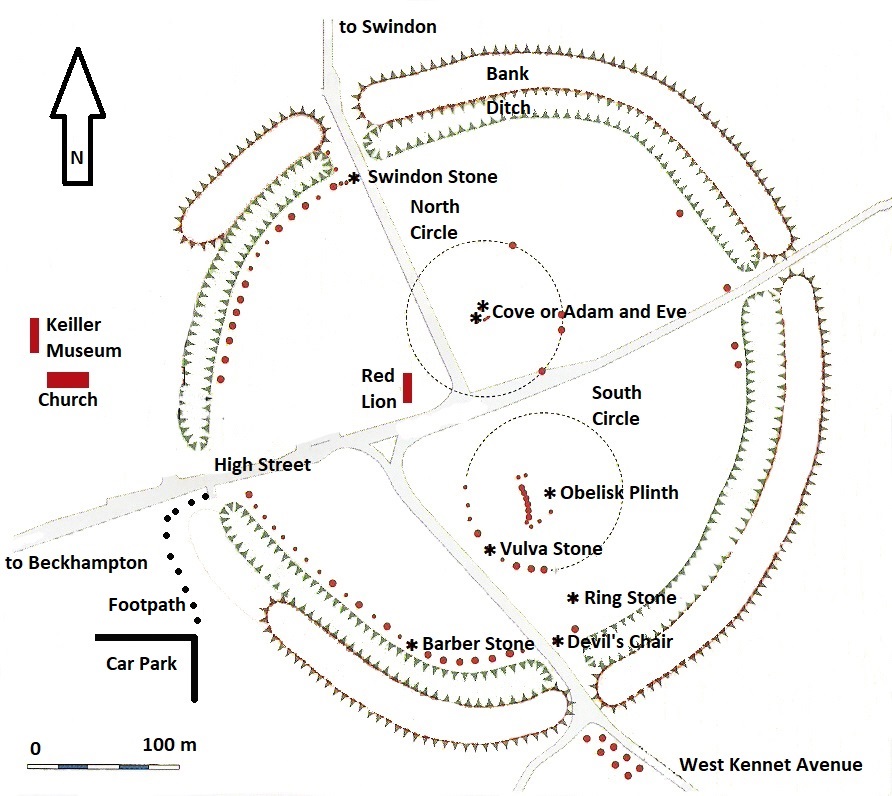
An edited plan of http://www.avebury-web.co.uk/
Some special stones.
There is the Barber Stone (Stone Number 9) to begin with. Here, 800 years ago, a hairdresser would have died trying to bury the stone, so he would have fallen under it. The stone is located in the southwestern part of the circle. He is thus put back upright in 1830 by Alexander Keiller and the body of the unfortunate one is removed. A pair of scissors was found on the body, which gave rise to the name Barber Stone. Coins were also found an important tool to date the skeleton to some 1200 AD. He was given the name Charlie and transferred to the Natural History Museum in London. The holes in the stone were said to have been caused by the roots of plants and they were already present in the mining site.
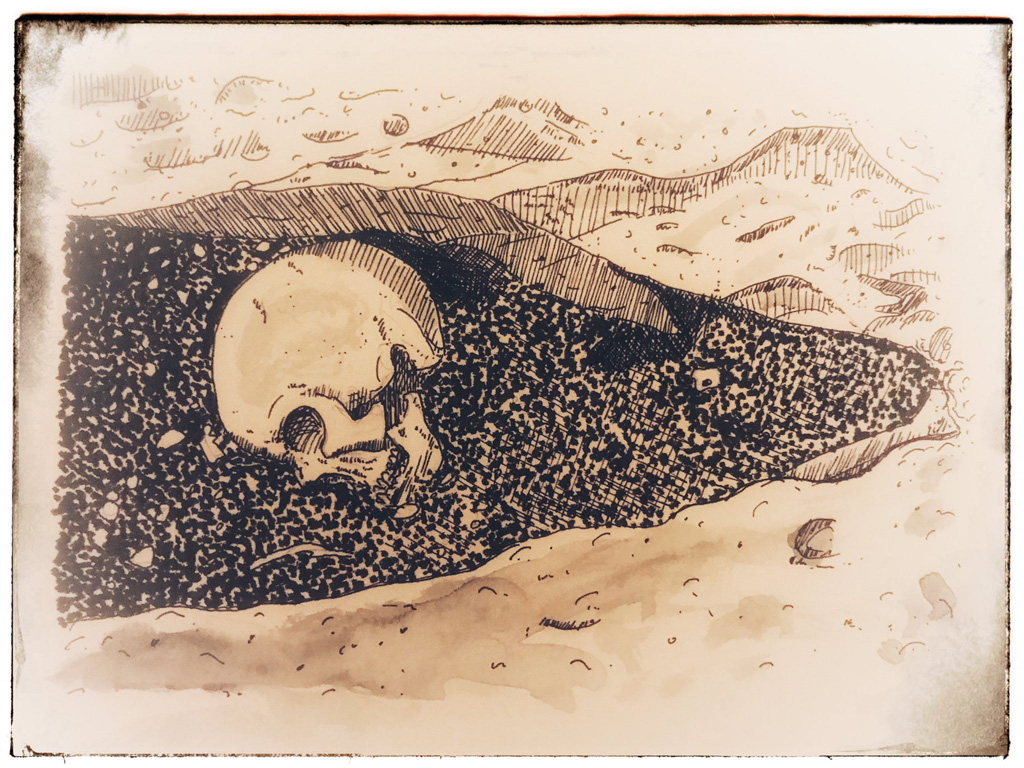
In the Alexander Keiller Museum we get this image of the unfortunate Barber Charlie.
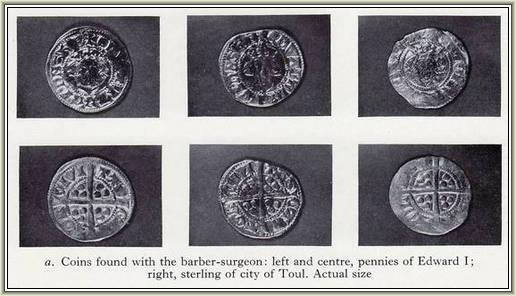
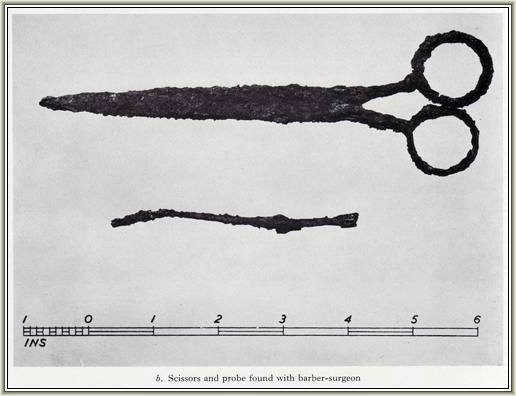
These coins allowed to determine charlie's age. The scissors and tweezers made him a hairdresser or an itinerant surgeon (display case Alexander Keiller Museum).
There is the so-called Devil’s Chair (Stone Number 1). He’s got a clear seat. Women made their intimate wishes here at times when the day and night were equally long. The stone is at the southern entrance, where West Kennet Avenue comes to the circle. So this is one of the eight paired access stones.
The heaviest megalith is one that stands in the Cove. Cove means a sheltered place, we are here in the middle of the north circle and maybe this was a birthing chamber where rituals were performed. It is believed that low chanting is reflected within that stone spot, It is believed that low chanting is reflected within that stone spot, women with labor could be reassured. The Cove consists of three stones. The largest is clearly a female stone and is therefore called Eve (Stone Number I). He’d weigh 100 tons and he’d be the biggest of its kind. Next to it is a column which is clearly a male stone and is therefore called Adam (Stone Number II). The third stone has been missing since 1713, which was at the time of William Stukeley. That stone should have made way for a house, which has since been demolished. Within the 3 stones that sheltered place had to be situated.
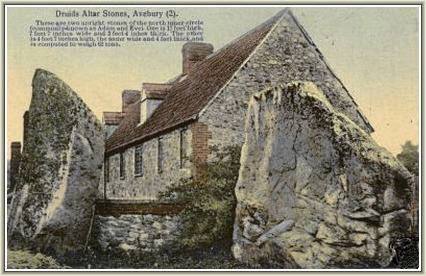
An early 20th Century postcard of the Cove of http://www.avebury-web.co.uk/. The houses were very close at the time.
The second heaviest megalith to be preserved is the approximately 65-ton Swindon Stone (Stone Number 46) standing at the north entrance. This is also one of the eight paired access stones. This giant diamond-shaped stone has been balancing lonely on one corner for 4000 years. His neighbour may have weighed 90 tons but he disappeared in 1722, despite the protest of William Stukeley. The stone fell over, was smashed and disposed of. Some smaller pieces of debris are still on the scene. If one were to take this road to Swindon, one can see a good example of a white horse further down the road.
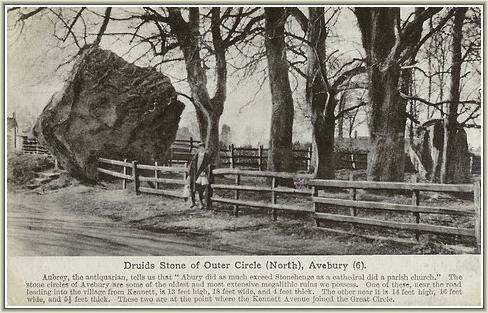
An early 20th Century postcard of the Cove of http://www.avebury-web.co.uk/. The stone is integrated into the fence.
There is the Ring Stone, actually a numberless stump that can easily pass by. His name certainly refers to the use of a wedding promise here and then sealed it with a ring.
There is also the Vulva Stone (Stone Number 105). The remarkable quarry in the stone refers without a doubt to the female sex organ. The stone is part of the south circle.
In the middle of the south circle there would have been an obelisk, the place is now marked by a concrete stump, a Plinth. The so-called obelisk would have had a striking length. In 1724 he was still there, but he was already lying on the ground. William Stukeley then calculated that he would have crossed more than 6 m above the ground.
As for the access stones, those in the north (Swindon Stone) and in the south (Devil’s Chair) are already mentioned. Completely, I mention that they are missing in the west and in the east there is another one (Stone Number 73) but it has been overturned for centuries.
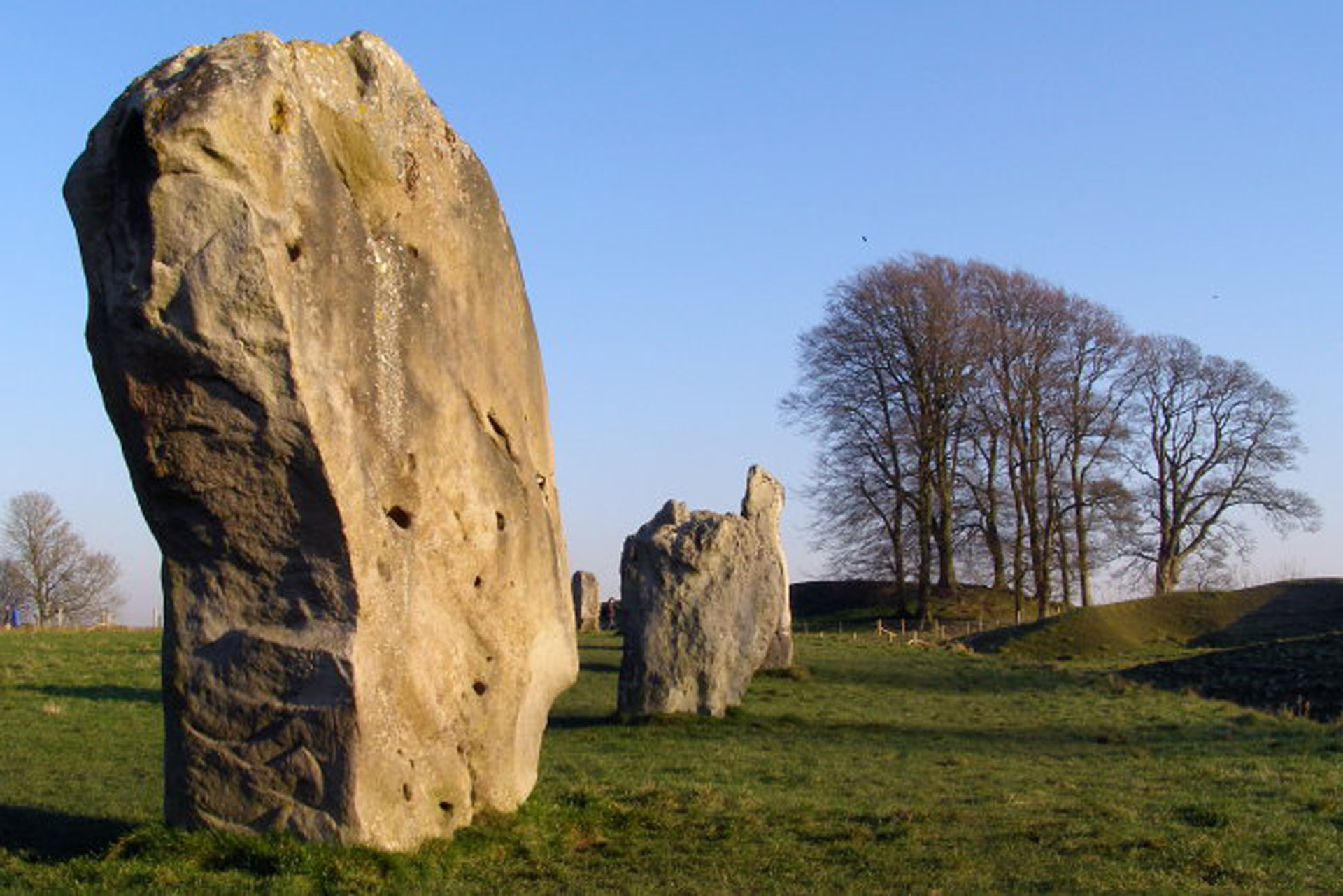



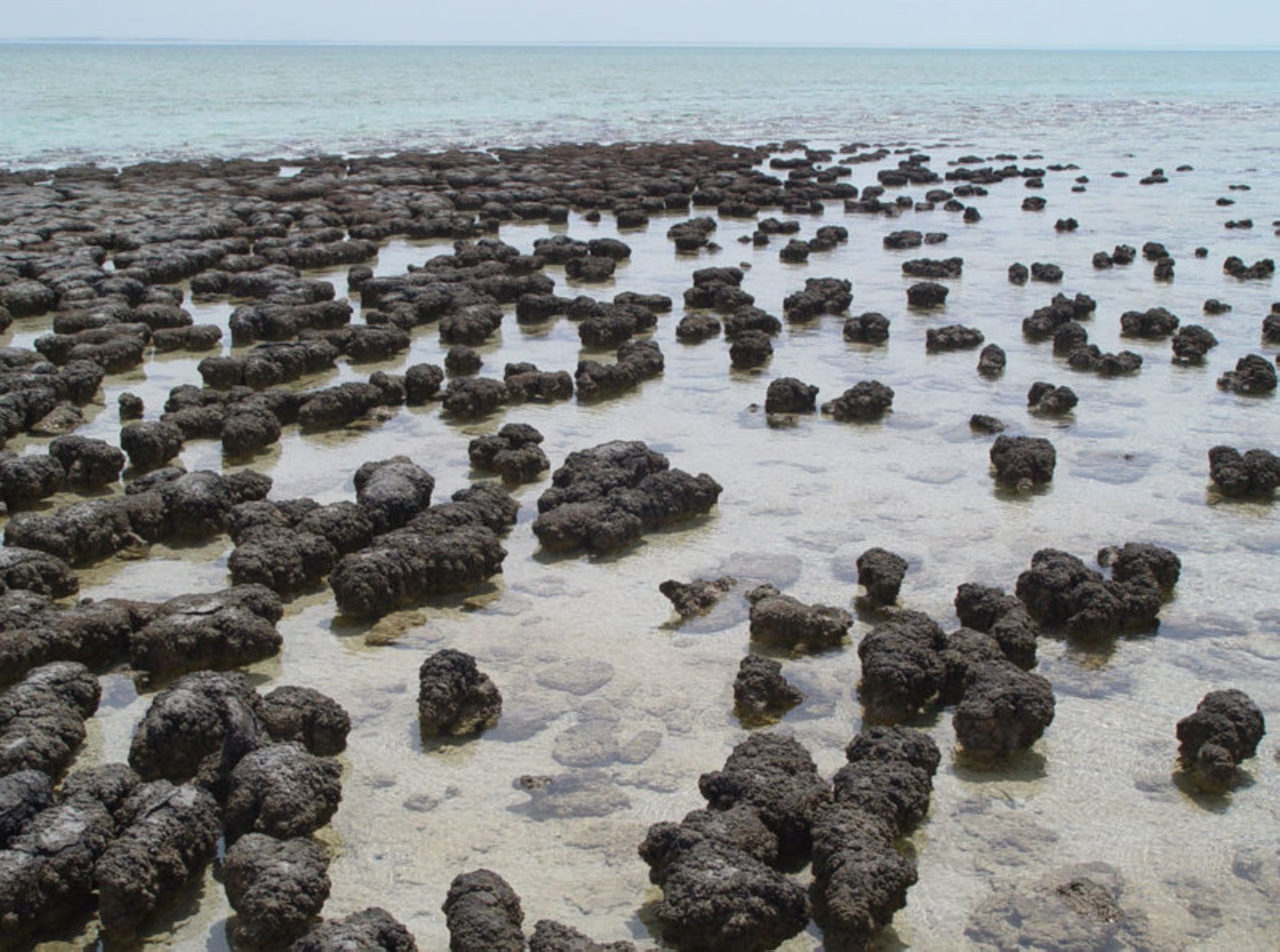
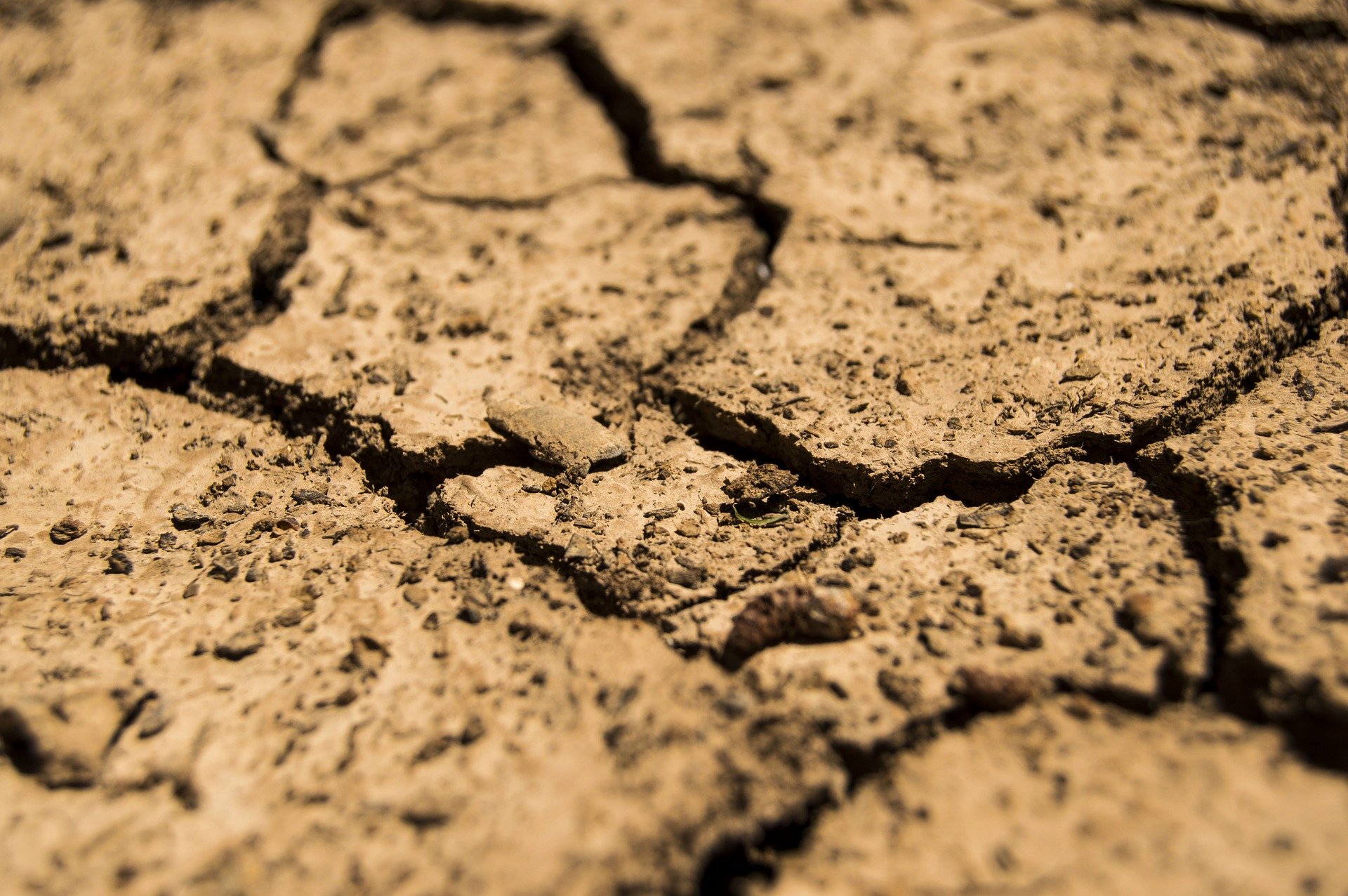
Comments